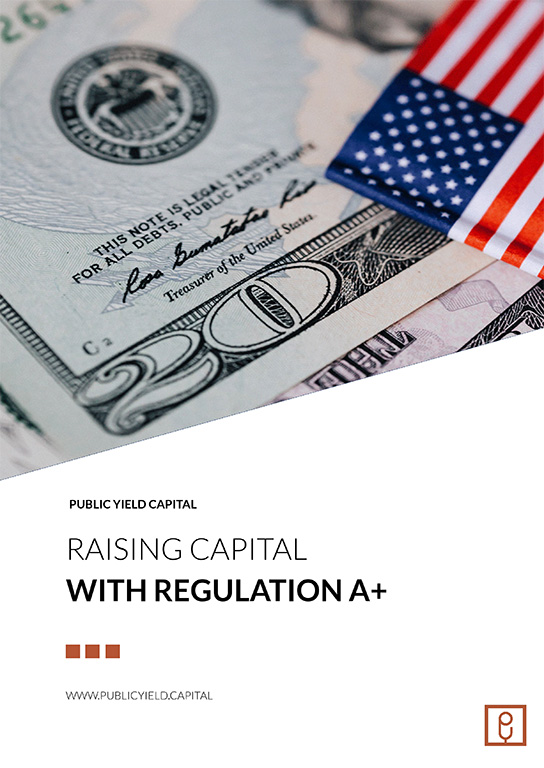
In the ever-evolving landscape of business, securing the necessary capital for growth and expansion remains a top priority for companies of all sizes. Two significant SEC exemptions, Regulation D (Reg D) and Regulation A+ (Reg A+), have emerged as avenues for companies to raise capital through online marketing. Each exemption possesses its unique set of advantages and considerations. This comprehensive guide aims to provide an in-depth exploration of Reg D and Reg A+, shedding light on the pros and cons of each, enabling you to make informed decisions for your capital-raising endeavors.
Understanding Reg D 506b and Reg D 506c
For companies engaged in online equity crowdfunding, Rule 506 within Regulation D holds considerable significance, offering two distinct variations: 506b and 506c. Both variants limit investments to accredited investors, yet they exhibit notable differences that set them apart. Let’s take a closer look at Reg D 506b and Reg D 506c.
Reg D 506c
Reg D 506c presents companies with the opportunity to raise unlimited capital exclusively from accredited investors. This variant boasts several key characteristics:
1. Extensive Promotion and Advertising
- Issuing companies can freely promote and advertise their offerings, reaching a wide audience with minimal limitations. This feature makes it an attractive option for companies looking to maximize their online exposure.
2. Accredited Investor Verification
- To participate in a Reg D 506c offering, investors must provide proof of their accredited status. Companies are required to take steps to verify the accreditation of potential investors, ensuring compliance with SEC regulations.
3. Form D Filing
- While companies are not obligated to register with the SEC, they are required to file a Form D. This filing includes comprehensive information about the company’s offering, promoters, and other relevant details. Notably, this is a notice filing, and companies do not need to await a response from the SEC.
Reg D 506b
Similar to Reg D 506c, Reg D 506b allows companies to raise unlimited capital, primarily from accredited investors. However, there are distinct differences to consider:
1. Marketing Limitations
- Under Reg D 506b, companies are restricted in their marketing efforts. They can only promote their offerings to individuals with whom they have an existing relationship and a confirmed status as accredited investors. General advertising and broad promotion are not permitted.
2. Self-Certification by Investors
- Investors in a Reg D 506b offering are allowed to self-certify their accredited status. While this offers some flexibility, it also places the responsibility on investors to accurately assess their eligibility.
3. Limited Non-Accredited Investors
- Reg D 506b allows up to 35 non-accredited investors to participate in the offering. However, certain precautions must be taken to ensure these investors are informed about the associated risks.
4. Form D Filing
- As with Reg D 506c, companies conducting a Reg D 506b offering must file a Form D, providing essential information about the offering and the company itself. This filing is a notice to the SEC, and no response from the SEC is required.
Navigating the World of Reg A+
Regulation A+, introduced by the SEC in 2015 as part of the Jumpstart Our Business Startups Act (JOBS Act), offers an innovative approach to raising capital. With Reg A+, companies can raise up to $75 million per entity per year online, attracting investors from all wealth levels worldwide.
Reg A+ Tier 2
Reg A+ Tier 2 opens the door to substantial capital raising, allowing companies to secure up to $75 million annually from both accredited and non-accredited investors. Let’s explore the key features of Reg A+ Tier 2:
1. Inclusivity and Global Reach
- Reg A+ welcomes investors from across the globe, making it accessible to anyone interested in participating. This inclusivity sets it apart from many other investment avenues.
2. Public Advertisement
- Companies leveraging Reg A+ can openly advertise their offerings to the public, reaching a wide and diverse audience. Unlike some traditional investment methods, there are no restrictions on promotion.
3. Streamlined State Regulations
- Reg A+ eliminates the need for state Blue Sky filing permissions, simplifying the regulatory process and reducing the associated costs.
4. Audited Financials
- Companies seeking to utilize Reg A+ must provide audited financial statements that cover the past two years (a shorter duration for new companies). This financial transparency enhances investor confidence.
5. SEC Form 1-A Filing
- Before embarking on an online fundraising campaign under Reg A+, companies are required to file a Form 1-A with the SEC. Once the SEC approves the offering, the company can initiate its fundraising campaign, which can span from one to three years.
6. Ongoing Reporting
- Reg A+ mandates ongoing compliance, including the submission of annual US-GAAP audits and semi-annual Management Financials. Any significant changes in the company’s operations must be promptly reported.
Reg A+ Liquidity
One of the significant advantages of Reg A+ is the liquidity it offers to investors. SEC regulations allow investors to sell their shares, with the level of liquidity determined by the actions of the issuing company following the offering. If the company opts to list its shares on major exchanges like NASDAQ or NYSE, the Reg A+ shares become readily tradable. Additionally, listing on an Alternative Trading System (ATS) provides a viable option for liquidity, particularly for younger companies not yet prepared for major exchange listings.
Issuer companies may also offer direct liquidity options to their investors by specifying valuation methods and applicable restrictions in their Form 1-A (known as the Offering Circular once SEC Qualification is achieved). This approach is regulated by Regulation M.
Regulation D and Regulation A+ are powerful tools for companies seeking to raise capital online. Your choice between these two exemptions should align with your specific financial needs, target investors, and long-term goals. Careful consideration of the advantages and disadvantages of each can guide you toward a successful capital-raising endeavor tailored to your unique circumstances.



